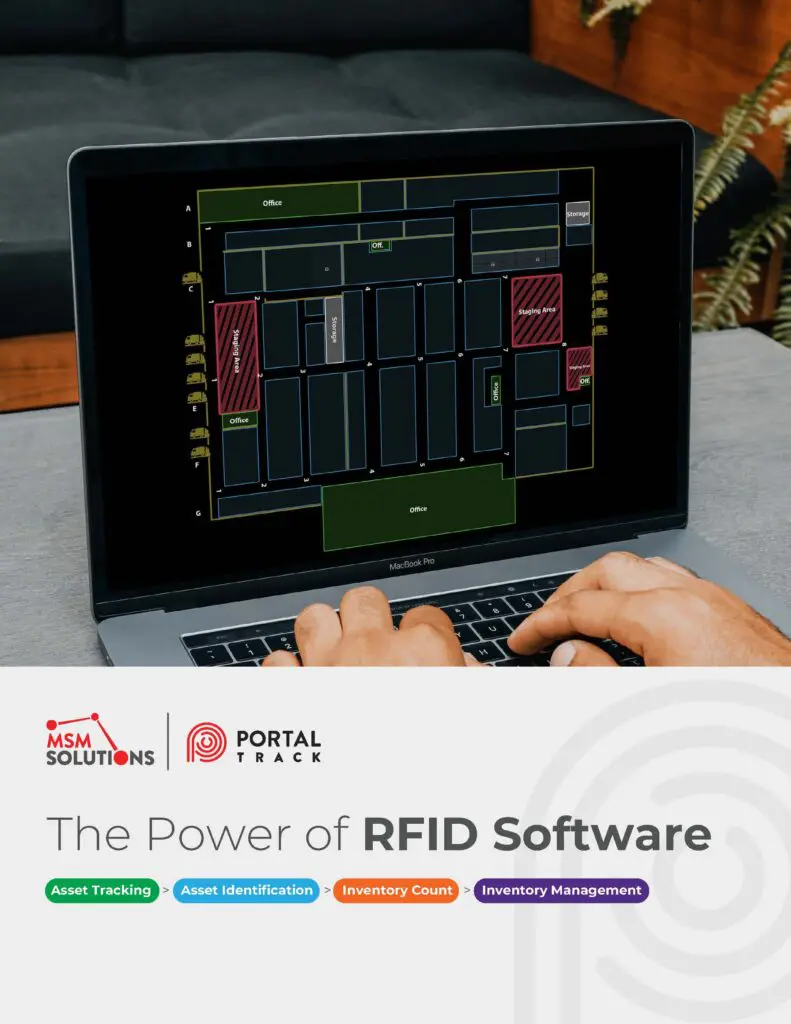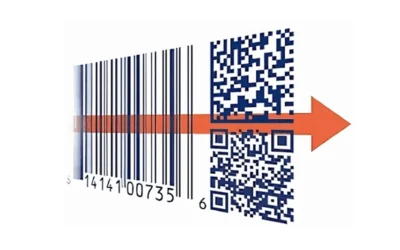Asset tracking is critical for maintaining operational efficiency and accuracy. Traditional methods of asset tracking on paper or spreadsheets are becoming increasingly obsolete. Enter RFID (Radio Frequency Identification) technology – a powerful solution that revolutionizes asset tracking by providing real-time data, enhancing accuracy, and reducing manual labor. In Part Two of our Series on RFID Software, we will explore the fundamentals of RFID asset tracking, its advantages, applications, and future trends and introduce how MSM Solutions’ PortalTrack RFID software helps businesses Identify, Track, Count, and Manage their assets.
1. What is RFID Asset Tracking?
RFID (Radio Frequency Identification) asset tracking uses electromagnetic fields to identify and track RFID tags attached to assets automatically. Traditional asset tracking methods often rely on counting, barcodes, and manual data entry, which can be time-consuming and error-prone. In contrast, RFID asset tracking provides automated data capture without the need for a direct line of sight, which increases accuracy and efficiency.
2. How Does RFID Asset Tracking Work?
RFID technology consists of RFID tags, readers, antennas, and software. The RFID tags, attached to assets, transmit data to RFID readers through antennas. The readers then communicate this data to software systems for processing and real-time tracking.
The RFID Asset process is:
- Encode an RFID label or RFID tag
- Apply the RFID tag to the asset
- Detect the RFID tag’s signal with antennas
- Capture the data with RFID readers
- Process the data through software to provide real-time tracking and updates
3. RFID Asset Tracking Software
When selecting RFID asset tracking software, look for features such as real-time tracking capabilities, integration with existing systems (Oracle, SAP, ERP, WMS), user-friendly interface, scalability, and flexibility. MSM’s PortalTrack RFID software offers comprehensive asset-tracking solutions with advanced features and seamless integration capabilities. These features include real-time asset location tracking across a factory floor, warehouse, or yard. Manufacturers can do batch tracking, and shipment tracking data access. By tracking throughout the entire supply chain, from point-of-origin to point-of-sale, manufacturers reduce errors, make better business decisions, and authenticate the product at all touchpoints.
4. Applications of RFID Asset Tracking
RFID asset tracking benefits various industries, including automotive, healthcare, logistics, retail, and manufacturing. Specific use cases and success stories include hospitals using RFID to manage and locate critical medical equipment, logistics companies improving inventory accuracy and reducing losses, and manufacturers enhancing production efficiency through real-time asset tracking. Retailers improve inventory management and safeguard themselves from counterfeiting and theft.
5. Choosing the Right RFID Asset Tracking System
When choosing the right RFID asset tracking system, consider scalability, cost, ease of use, and vendor support. Evaluate different RFID systems based on these criteria to choose the best fit for your business. If you evaluate MSM Solutions’s PortalTrack, we can customize it to fit the features, scalability, and cost you need. Scalability ensures the system can grow with your business. Cost considerations include the total cost of ownership. MSM Solutions is a total RFID solutions vendor that provides RFID hardware, software, and maintenance. Ease of use is crucial as user-friendly systems reduce training time and improve adoption. Reliable vendor support is essential for smooth implementation and operation. MSM Solutions is a premier Zebra partner.
6. Common Questions about RFID Asset Tracking
Here are some common questions about RFID asset tracking:
- Can RFID be used for asset tracking? Yes, RFID is highly effective for short-distance monitoring up to 10 feet. Longer distances may require battery assistance to drive the signal farther.
- How much does an RFID asset tag cost? RFID inlays cost 2-10 cents, but creating it into a label or a special form factor to attach to the asset can increase the cost by 2X-10X.
- How does RFID track the real-time location of assets or employees? RFID readers capture data from tags in real-time, instantly updating the PortalTrack software system.
7. Implementing RFID Asset Tracking in Your Business
To implement RFID asset tracking in your business, follow these steps: assess your business needs and goals, choose the right RFID system and vendor, plan the implementation process (including tagging assets and setting up readers and antennas), integrate the RFID system with your existing software, train your staff on how to use the new system, and monitor the system’s performance and make necessary adjustments. Potential challenges include cost, integration, and training, which can be overcome by starting with a pilot project to demonstrate ROI, working closely with your vendor for seamless integration, and providing comprehensive staff training.
8. Future Trends in RFID Asset Tracking
Emerging technologies and innovations, such as IoT integration, AI-driven analytics, and enhanced tag technologies, are driving the evolution of RFID asset tracking. The future of RFID asset tracking includes more sophisticated, cost-effective, and integrated systems, making asset management more efficient and reliable.
Ready to transform your asset tracking processes? Contact MSM Solutions today to get a personal demo of PortalTrack for a free consultation on implementing RFID asset tracking in your business.



